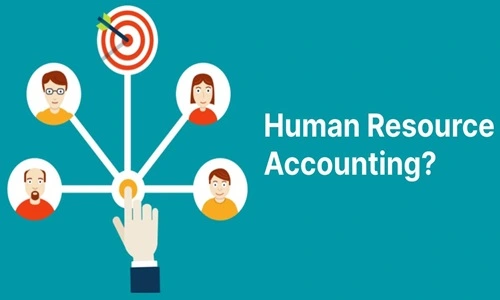See, humans working within an organisation is by far the most valuable asset, and no one can deny that very fact, right? And that is precisely where Human Resource Accounting comes into play, but it is a completely different type of accounting method that you have heard or seen anywhere in place. By definition, it is an accounting method in which the identification, measurement, and reporting of the human resources of an organization is conducted. And there are many good reasons to do so, but sure, there are some downsides to it as well, which most people just tend to overlook. Worry not, we won’t because here we are going to take a good look at the possible advantages and disadvantages of human resources accounting or HRA for short. Here we go.

Advantages of Human Resource Accounting
1. Smarter Decisions
To put it simply, it is a 100% true that Human Resource Accounting (HRA) delivers vital information that improves decision-making in a company. This gives an idea to businesses about how much their staff is really worth. The learning helps leaders make wise decisions about who to employ, train, and develop.
2. Easier Workforce Planning
HRA can help efficiently organize the workforce of an organization. Detailed data on employee skills, training, and performance will assist in predicting future HR requirements and the measures that need to be taken in advance. This shall eventually bring the right number of staff, and the right people holding the right roles within the organization, which is ultimately a good thing for the overall growth.
3. Increased Employee Motivation
You see, one of the significant advantages of HRA is increased staff motivation. In an organization, if the employer can show that they understand and appreciate an employee’s work, they are also most capable of attaching pay and rewards directly to an employee’s performance. Such a realization enhances motivation massively, with the employees feeling valued and pushed to achieve even more. HRA play a significant behind-the-scenes role in fostering a positive environment that supports teamwork.
4. Better Training Programs
Human Resource Accounting allows an organization to establish more effective training schemes. For example, if it is known what area the employees are strong or weak, then training can be tailored to meet specific needs and raise performance overall, right? That’s why this ensures money spent on training is well used, and staff receive skills enabling career growth.
5. Attracts and Keeps Top Talent
HRA use can make the image of the organization a more attractive one toward the best talents too. Being open and fair about how you value work from employees draws in skilled people. HRA also retains the talent that you already have by making them feel appreciated and properly rewarded, and that too for the long term. A strong reputation for human resource value works in your favor in the job market because it helps you bring in and keep the best people.
6. Clearer Financial Reports
HRA gives a correct and reliable picture of the human resource value, and as a result, this can enhance the quality of the reporting done for the finance of your company. This wide aspect makes it possible for everyone to see the actual spectrum of your company’s assets, and this extends to people too. Better financial reporting is essential to the stakeholders, investors, and regulators because it is the best means for providing a fair picture of a company’s value as well as a more reliable estimate of the growth prospect.
7. Supports Strategic Planning
Lastly, you see, HR Accounting facilitates strategic planning by providing necessary information regarding what the workforce can and cannot do. Such information will help align the HR strategy with the general company objectives. In doing so, by finding the value and potential in human resources, you can make strategic moves that can help uplift your company’s performance in the long run.
Disadvantages of Human Resource Accounting
1. Guesswork and No Set Rules
A big problem with HR Accounting is how subjective it is when measuring human capital. You see, it is pretty hard to put an accurate monetary value on human resources compared to physical assets. Using different methods and assumptions can cause results to vary greatly making it tough to compare numbers between companies. Inconsistencies of this sort can lead to errors and affect the reliability of the information from HRA.
2. Expensive to Implement
There is a cost to the implementation of HRA, and sometimes it is expensive, mostly for small and medium enterprises (SMEs). Great amounts of funds are used for specialized software and tools, and there is much training that is required by the HR staff too. Moreover, updating the HRA system and continuous data collection may be very expensive for an organization.
3. Complicated and Time-Consuming
Now, we all can agree that HRA is a complex affair and involves a large process of collection and interpretation of data. It involves recruitment costs, training costs, the performance of employees, and whatnot. It requires a lot of time, energy, and money, mostly coming out of an overhead for companies and mainly for those with small HR teams.
4. Privacy and Fairness Issues
You see, the ethical and legal issues against HRA primarily revolve around privacy and discrimination. It is seen to collect detailed information about employees, and thus it is regarded as a potential invasion of privacy that must be dealt with carefully, you know? There’s always that problem that viewing employees just as assets could lead to treating them as just numbers, and that always feels so unfair and can cause huge legal problems over discrimination and fairness.
5. Constant Updating Needed
Human Resource Accounting is not a one-time activity, but on the contrary, a continuous updating process in a manner that the data always remains realistic. Human resources are dynamic, and that is why data has to be regularly updated to maintain pace, and that can be no less of a headache.
6. No Common Standards
You see, different companies might use different ways to measure their human capital, which means results aren’t easily comparable. And yes, without standardized ways, it is also difficult to measure the performance against others in the industry or to give clear and consistent information to all stakeholders in the firm.
Conclusion
That’s pretty much it. Now you know why organizations/firms or companies go down the path to use HRA. And we hope that today’s post laid down various facts about this whole HRA thing in the simplest way possible.
Related Topics
- Financial Accounting Advantages and Disadvantages
- Departmental Accounting Advantages and Disadvantages
- Management Accounting Advantages and Disadvantages

